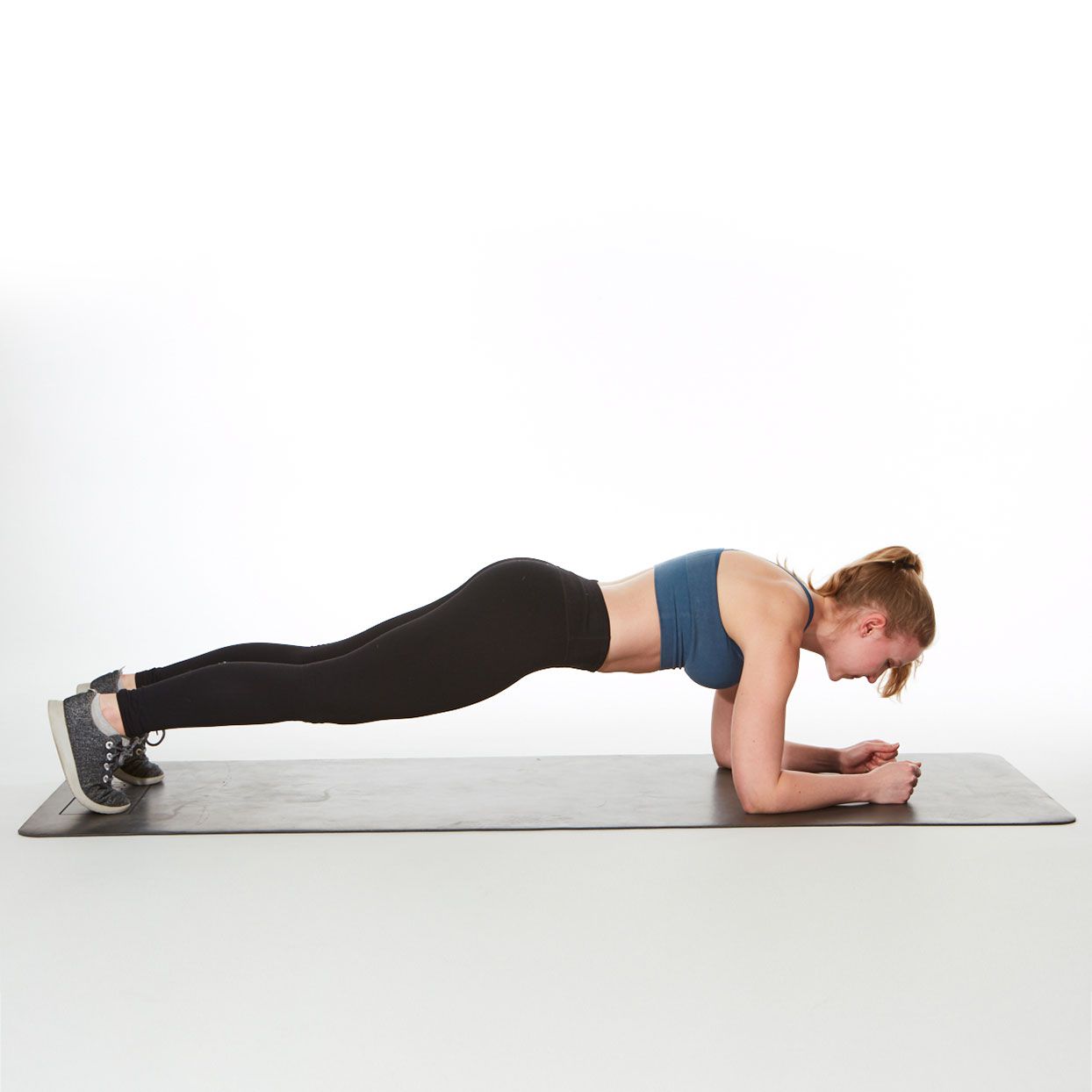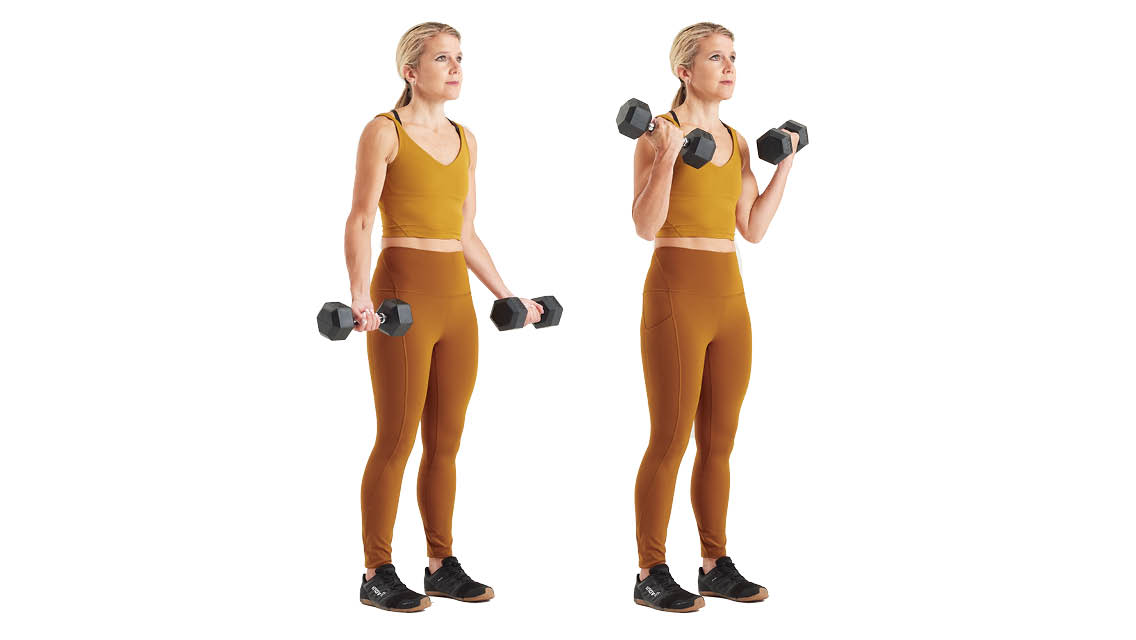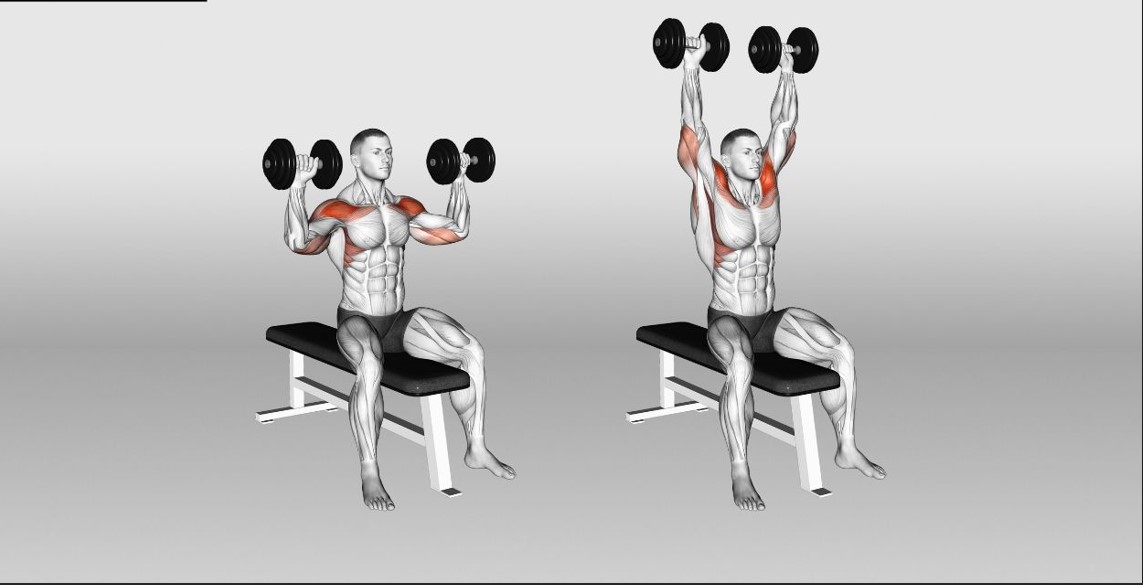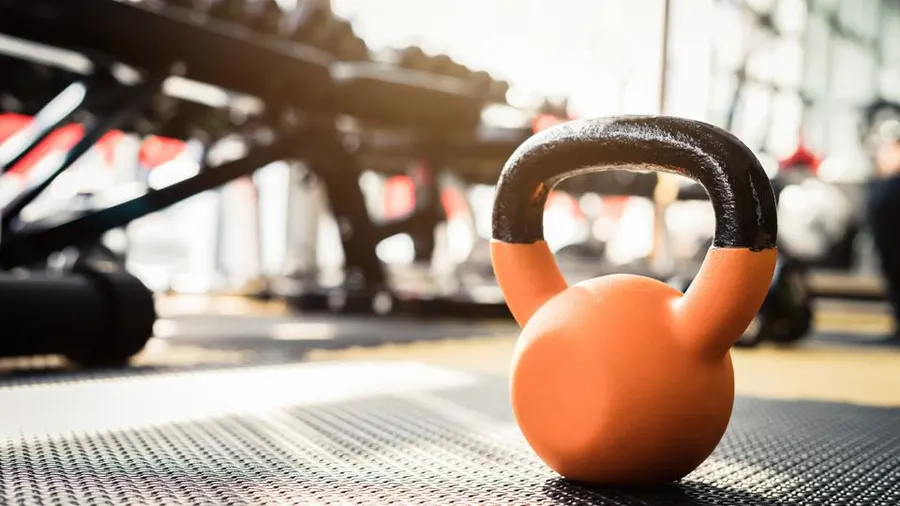Strength training, also known as resistance training, is a critical component of a well-rounded fitness regimen. It involves exercises designed to improve muscle strength and endurance by exercising a muscle or a muscle group against external resistance. This comprehensive guide aims to provide detailed information on the benefits, getting started, exercises, progression, tips for success, and common mistakes to avoid in strength training.
Benefits of Strength Training
Strength training offers a multitude of health benefits:
- Increased Muscle Mass
- Muscle Hypertrophy: Regular resistance training stimulates muscle growth (hypertrophy), which enhances muscle size and strength. This is particularly important for aging individuals, as muscle mass naturally declines with age.
- Improved Body Composition: By increasing muscle mass and reducing body fat, strength training improves overall body composition and contributes to a leaner physique.
- Enhanced Bone Density
- Bone Health: Weight-bearing exercises, such as squats and deadlifts, improve bone density, reducing the risk of osteoporosis and fractures. This is crucial for maintaining bone health, especially in older adults.
- Better Joint Function
- Joint Stability: Strengthening the muscles around your joints provides better support and stability, reducing the risk of injuries. Exercises like lunges and leg presses help improve joint function and mobility.
- Increased Metabolic Rate
- Resting Metabolic Rate: Building muscle increases your resting metabolic rate (RMR), meaning you burn more calories even at rest. This aids in weight management and fat loss.
- Mental Health Benefits
- Stress Relief: Strength training has been shown to reduce symptoms of anxiety and depression. The physical exertion releases endorphins, which are natural mood lifters.
- Cognitive Function: Regular exercise, including strength training, can improve cognitive function and reduce the risk of neurodegenerative diseases.
Getting Started
Starting a strength training program can be intimidating, but with the right approach, it can be both safe and effective. Here are some steps to get you started:
1. Consult with a Healthcare Provider
- Medical Clearance: If you have any pre-existing health conditions or have been inactive for a while, consult with your healthcare provider before starting a strength training program.
2. Set Realistic Goals
- SMART Goals: Set Specific, Measurable, Achievable, Relevant, and Time-bound (SMART) goals. For example, aim to perform three strength training sessions per week for the next two months.
3. Warm-Up
- Dynamic Warm-Up: A proper warm-up prepares your muscles and joints for exercise, reducing the risk of injury. Spend 5-10 minutes doing light cardio (e.g., walking or jogging) and dynamic stretches (e.g., leg swings, arm circles).
4. Basic Equipment
- Essential Gear: Invest in some basic equipment such as dumbbells, resistance bands, and a stability ball. Alternatively, you can start with bodyweight exercises if you don’t have access to equipment.
Basic Strength Training Exercises
These exercises target major muscle groups and are ideal for beginners:

1. Squats
Target Muscles: Quadriceps, hamstrings, glutes.
How to Perform:
- Starting Position: Stand with your feet shoulder-width apart. Keep your chest up and your core engaged.
- Lowering Phase: Bend your knees and hips to lower your body as if you’re sitting back into a chair. Ensure your knees do not go past your toes, and keep your back straight.
- Depth: Lower yourself until your thighs are parallel to the floor, or as low as you can comfortably go while maintaining proper form.
- Rising Phase: Push through your heels to return to the starting position, fully extending your hips and knees.
- Breathing: Inhale as you lower your body and exhale as you return to standing.
Tips:
- Keep your weight on your heels to engage the glutes.
- Use a mirror to check your form, ensuring your knees track over your toes.
- Hold dumbbells at your sides or a barbell on your shoulders for added resistance.
Benefits:
Engages core muscles for better overall conditioning.
Enhances lower body strength and muscle mass.
Improves balance and stability.

2. Push-Ups
Target Muscles: Chest, shoulders, triceps.
How to Perform:
- Starting Position: Begin in a plank position with your hands placed slightly wider than shoulder-width apart. Your body should form a straight line from head to heels.
- Lowering Phase: Bend your elbows to lower your body towards the floor. Keep your elbows at a 45-degree angle to your torso.
- Depth: Lower until your chest nearly touches the floor, maintaining a straight body line.
- Pushing Phase: Push through your palms to straighten your arms and return to the starting position.
- Breathing: Inhale as you lower your body and exhale as you push back up.
Modifications:
- For beginners, perform push-ups on your knees.
- For added challenge, elevate your feet on a stable surface or perform decline push-ups.
Benefits:
Improves functional strength useful for everyday activities.
Builds upper body strength, focusing on the chest, shoulders, and triceps.
Engages core muscles for stability.

3. Lunges
Target Muscles: Quadriceps, hamstrings, glutes, calves.
How to Perform:
- Starting Position: Stand with feet hip-width apart and hands on your hips or holding dumbbells at your sides.
- Step Forward: Take a large step forward with one leg, ensuring your knee stays above your ankle.
- Lowering Phase: Lower your hips until both knees are bent at 90-degree angles. Your back knee should hover just above the floor.
- Pushing Phase: Push through the heel of your front foot to return to the starting position.
- Alternating: Repeat on the other leg, alternating sides with each repetition.
- Breathing: Inhale as you step forward and lower, exhale as you push back to standing.
Tips:
- Keep your torso upright throughout the movement.
- Ensure your front knee does not extend past your toes.
- Maintain balance by engaging your core muscles.
Benefits:
Enhances functional fitness for daily movements.
Strengthens lower body muscles.
Improves balance and coordination.

4. Planks
Target Muscles: Core, shoulders.
How to Perform:
- Starting Position: Begin in a push-up position with your body forming a straight line from head to heels. Alternatively, you can perform a forearm plank with your elbows directly under your shoulders.
- Hold Position: Engage your core muscles and hold the position without allowing your hips to sag or rise.
- Duration: Hold the plank for 30-60 seconds, or as long as you can maintain proper form.
- Breathing: Maintain steady breathing throughout the hold.
Tips:
- Keep your neck neutral by looking at a spot on the floor slightly ahead of your hands.
- Squeeze your glutes and thighs to help maintain a straight line.
- Start with shorter holds and gradually increase the duration as you build strength.
Benefits:
Improves overall body control and endurance.
Strengthens the core, including the abdominals, obliques, and lower back.
Enhances shoulder stability.

5. Bicep Curls
Target Muscles: Biceps.
How to Perform:
- Starting Position: Stand with feet hip-width apart, holding a dumbbell in each hand with palms facing forward.
- Curl Phase: Bend your elbows to curl the weights towards your shoulders. Keep your elbows close to your torso and avoid swinging the weights.
- Squeeze: At the top of the movement, squeeze your biceps.
- Lowering Phase: Slowly lower the weights back to the starting position, fully extending your arms.
- Breathing: Exhale as you curl the weights up and inhale as you lower them.
Tips:
- Focus on controlled movements to maximize muscle engagement.
- Avoid using momentum to lift the weights; let your muscles do the work.
- Start with a weight that allows you to perform the exercise with good form.
Benefits:
Supports functional activities requiring arm strength.
Isolates and strengthens the biceps.
Enhances upper arm definition.

6. Overhead Press
Target Muscles: Shoulders, triceps.
How to Perform:
- Starting Position: Stand with feet shoulder-width apart, holding a dumbbell in each hand at shoulder height with palms facing forward.
- Pressing Phase: Press the weights overhead until your arms are fully extended. Keep your core engaged and avoid arching your back.
- Lowering Phase: Lower the weights back to shoulder height in a controlled manner.
- Breathing: Exhale as you press the weights up and inhale as you lower them.
Tips:
- Maintain a strong core to stabilize your body during the lift.
- Avoid locking your elbows at the top of the movement.
- Use a weight that allows you to maintain proper form without straining.
Benefits:
Improves shoulder mobility and functional strength.
Strengthens the shoulders and triceps.
Enhances upper body stability.
Putting It All Together
Combining these basic exercises into a routine will help you build a strong foundation in strength training. Here’s a sample beginner workout:
Sample Workout Routine
- Warm-Up: 10 minutes of light cardio (e.g., brisk walking or jogging).
- Exercises:
- Squats: 3 sets of 10-15 reps.
- Push-Ups: 3 sets of 10-15 reps.
- Lunges: 3 sets of 10-15 reps per leg.
- Planks: Hold for 30-60 seconds, 3 sets.
- Bicep Curls: 3 sets of 10-15 reps.
- Overhead Press: 3 sets of 10-15 reps.
- Cool Down: Light stretching for all major muscle groups.
Sample Beginner Workout Routine
Here’s a sample strength training routine to help you get started:
Day 1: Full-Body Workout
- Warm-Up: 10 minutes of light cardio.
- Exercises:
- Squats: 3 sets of 10 reps.
- Push-Ups: 3 sets of 10 reps (modify as needed).
- Dumbbell Rows: 3 sets of 10 reps per arm.
- Plank: Hold for 30-60 seconds.
- Bicep Curls: 3 sets of 10 reps.
- Overhead Press: 3 sets of 10 reps.
- Cool Down: Light stretching for all major muscle groups.
Day 2: Rest or Light Activity
- Activity: Light cardio or stretching.
Day 3: Lower Body Focus
- Warm-Up: 10 minutes of light cardio.
- Exercises:
- Lunges: 3 sets of 10 reps per leg.
- Leg Press: 3 sets of 10 reps.
- Calf Raises: 3 sets of 15 reps.
- Plank: Hold for 30-60 seconds.
- Cool Down: Light stretching for all major muscle groups.
Day 4: Rest or Light Activity
- Activity: Light cardio or stretching.
Day 5: Upper Body Focus
- Warm-Up: 10 minutes of light cardio.
- Exercises:
- Bench Press: 3 sets of 10 reps.
- Dumbbell Rows: 3 sets of 10 reps per arm.
- Shoulder Press: 3 sets of 10 reps.
- Bicep Curls: 3 sets of 10 reps.
- Tricep Dips: 3 sets of 10 reps.
- Cool Down: Light stretching for all major muscle groups.
Day 6: Rest or Light Activity
- Activity: Light cardio or stretching.
Day 7: Active Recovery or Rest
- Activity: Gentle yoga or a light walk.
Tips for Success
1. Consistency
- Regular Schedule: Stick to a regular workout schedule. Consistency is key to seeing progress in strength training.
2. Proper Form
- Technique Over Weight: Focus on maintaining proper form and technique rather than lifting heavier weights. This helps prevent injuries and ensures you are effectively working the targeted muscles.
3. Balanced Diet
- Nutrition: Consume a balanced diet rich in protein, healthy fats, and complex carbohydrates to support muscle repair and growth. Stay hydrated by drinking plenty of water throughout the day.
4. Listen to Your Body
- Avoid Overtraining: Pay attention to your body’s signals and avoid overtraining. If you feel excessive soreness or fatigue, allow yourself extra rest and recovery time.
5. Track Your Progress
- Workout Journal: Keep a workout journal to track your exercises, weights, sets, and repetitions. This helps you monitor your progress and make necessary adjustments to your routine.
Common Mistakes to Avoid
1. Skipping Warm-Up and Cool Down
- Importance: Always include a warm-up and cool-down in your routine to prevent injuries and promote recovery.
2. Lifting Too Heavy Too Soon
- Progress Gradually: Start with lighter weights and focus on proper form. Gradually increase the weight as you get stronger to avoid injuries.
3. Neglecting Rest Days
- Recovery: Rest days are crucial for muscle repair and growth. Ensure you have at least one rest day between strength training sessions for the same muscle group.
4. Inconsistent Training
- Routine: Stick to a consistent training schedule. Inconsistent workouts can hinder your progress and make it difficult to achieve your fitness goals.
5. Poor Nutrition
- Balanced Diet: Eating a balanced diet that supports your training is essential. Ensure you are consuming
